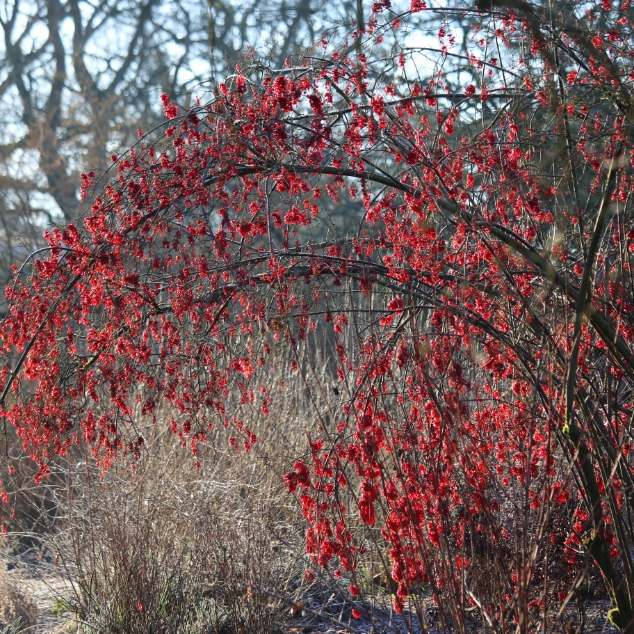Heatwave gardening; Yuccas and everlasting flowers

Less than two weeks ago, RHS Wisley saw temperatures up to 38°C, with ferociously hot drying winds. The soil was already bone dry, so we saw a true test of plants’ ability to cope in extremely high temperatures and drought. The heat and aridity seems to bring out special qualities in many drought-adapted plants, often from alpine, steppe and mediterranean regions. The wide range of yuccas on display in the Heather Landscape at RHS Wisley were looking positively smug during the heatwave, surrounded by swathes of heat-loving annuals grown for their use as dried flowers.
Heatwave gardening: Everlasting flowers
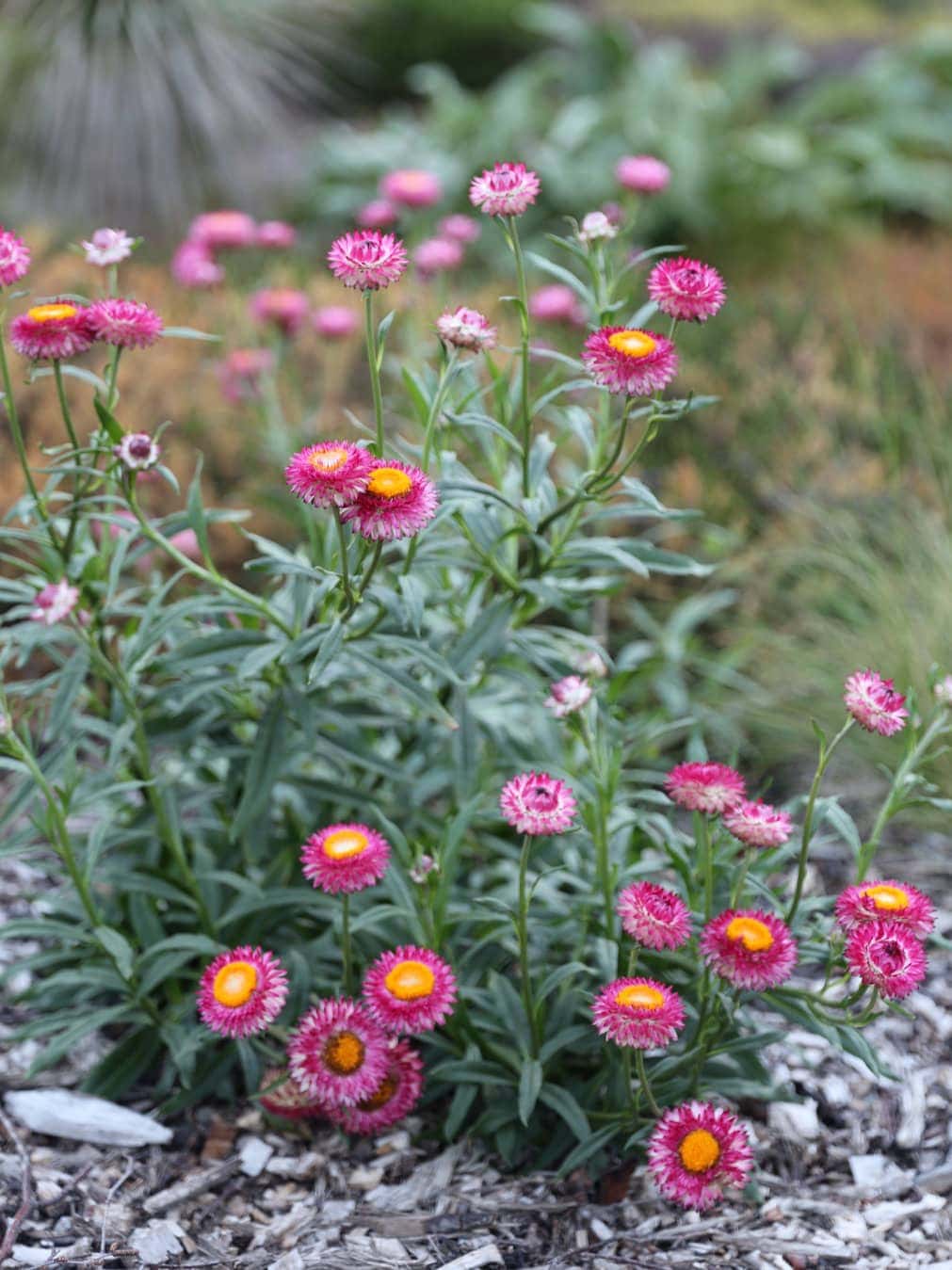
The drought-adapted heat-loving annuals, are mainly Xerochrysum bracteatum, the everlasting flower, and Limonium sinuatum, known as sea lavender. Natalie Plumbridge, the heather landscape horticulturist, creates immersive dried flower installations in the oak timber shelter that sits at the heart of the landscape.
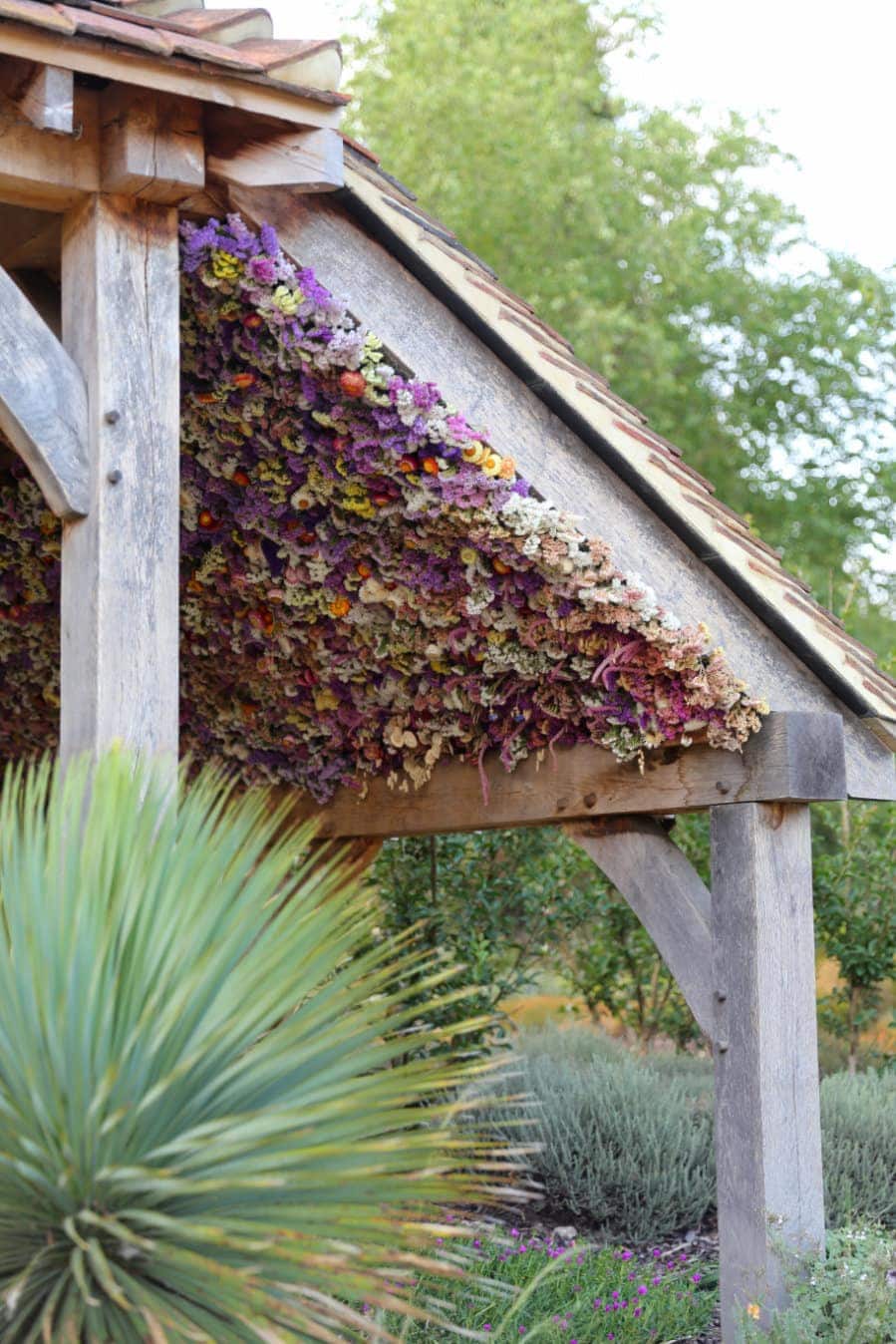
In this parched area of the garden, the oak shelter provides a cool vantage point with rocking benches. The inner roof is lined with hundreds of bunches of dried lavender flowers. These are cut and collected during the summer pruning of the nearby lavender field, which will happen in the next few weeks. The serene scent of freshly cut lavender drifts on the late summer air. Sit in the deep cool shade, uplifted with aroma, looking over the mediterranean landscape. Our increasingly hot summers are teaching us the importance of shade in our gardens.
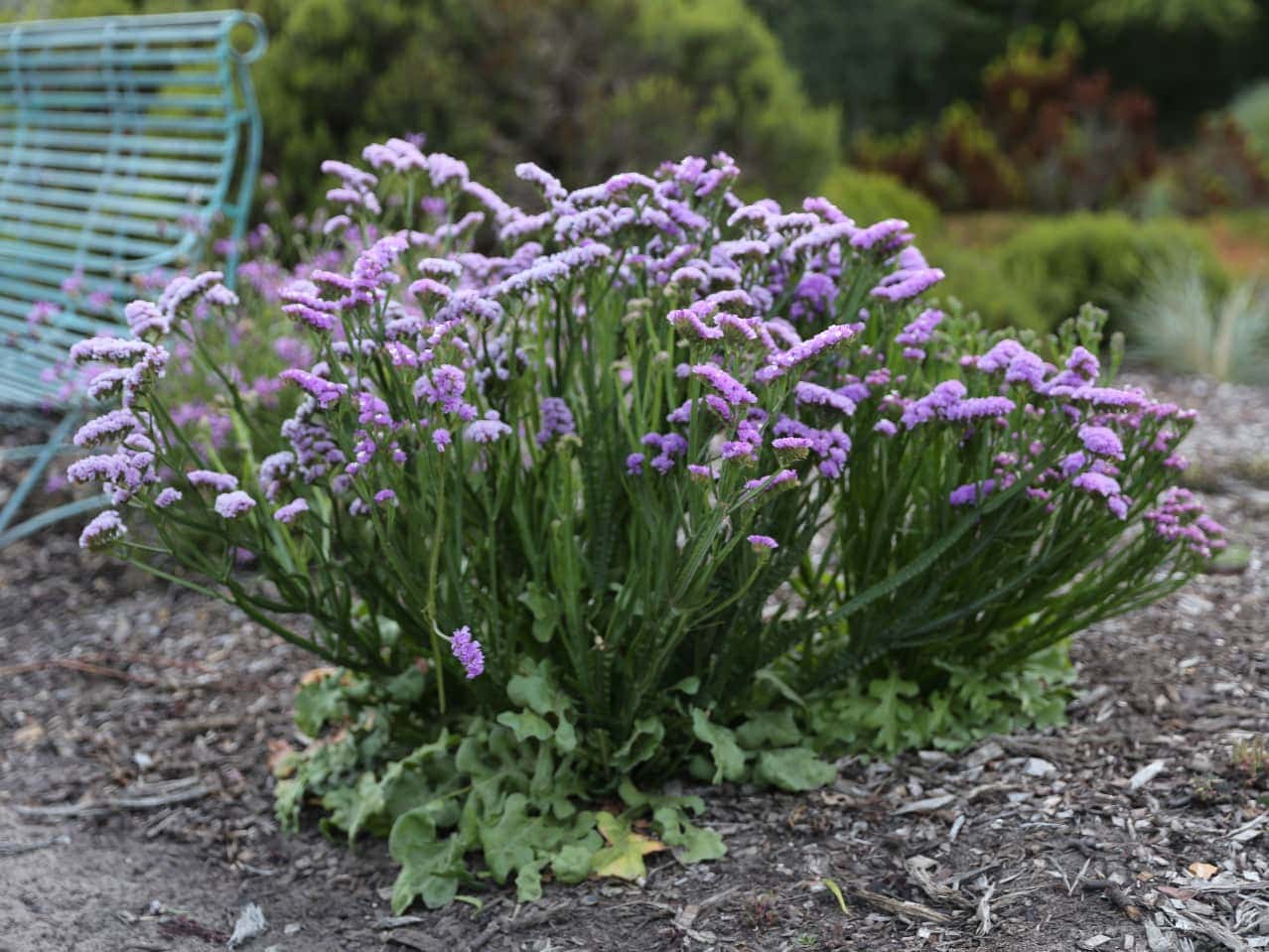
Natalie grows a range of limoniums, from ‘Pacific Mixed’ seed, which come up in white, lilacs, pale pinks, yellows, apricots and deeper pinks and purple. Limonium sinuatum ‘Apricot Beauty’ comes up in a narrower range of peach and apricot colours. Although actually being hardy short-lived perennials, they are generally treated as half-hardy annuals. Limoniums are best started in early spring under glass, and benefit from a little extra warmth to help them germinate. They come from the Mediterranean, and grow best on poor soils with good drainage, in full sun.
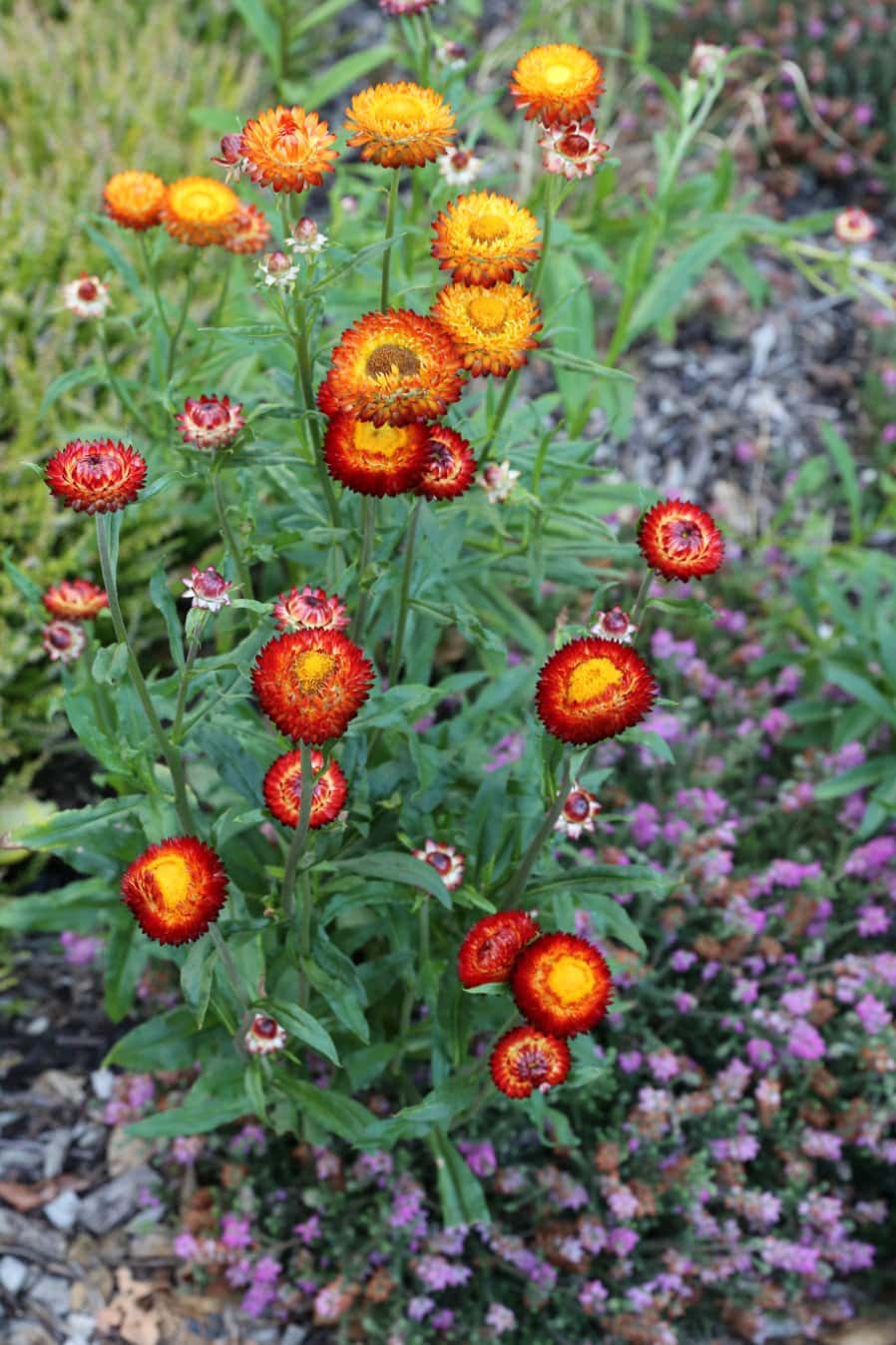
Xerochrysum bracteatum, often known as Helichrysum bracteatum, is the everlasting flower. It has been in cultivation in the UK for over 230 years, but the species comes from Australia, where it grows in every one of the nation’s states. This is a tender annual, also appreciating a little extra warmth to germinate the seeds in spring. In warmer areas, you may find it self-seeds around gently.
Heatwave gardening: Yuccas
While the annuals bring seasonal colour and a long-lasting crop of dried flowers, the diverse variety of yuccas on the Heather Landscape provide year-round architectural interest. Many of these plants have light-reflecting silver and glaucus blue foliage, which take on almost iridescent hues in periods of extreme sun and heat. You may be surprised to hear that yuccas are in the asparagus family of plants, and globally there are around 40 species of yucca, all of which are woody-based trees and shrubs. They all come from the Americas and the Caribbean. Some are frost tender, but all yuccas mentioned here are rated as hardy down to between -10 and -15°C.

With rigid leaves up to 1.4m in length, Yucca treculeana is a particularly large and highly architectural yucca. Not widely available in the UK, but specialist palm nurseries are the place to look, although yuccas are not technically palms. This species is from northern Mexico and southern Texas, and eventually develops a stocky trunk as it slowly gains height, sometimes branching to have multiple heads per plant.
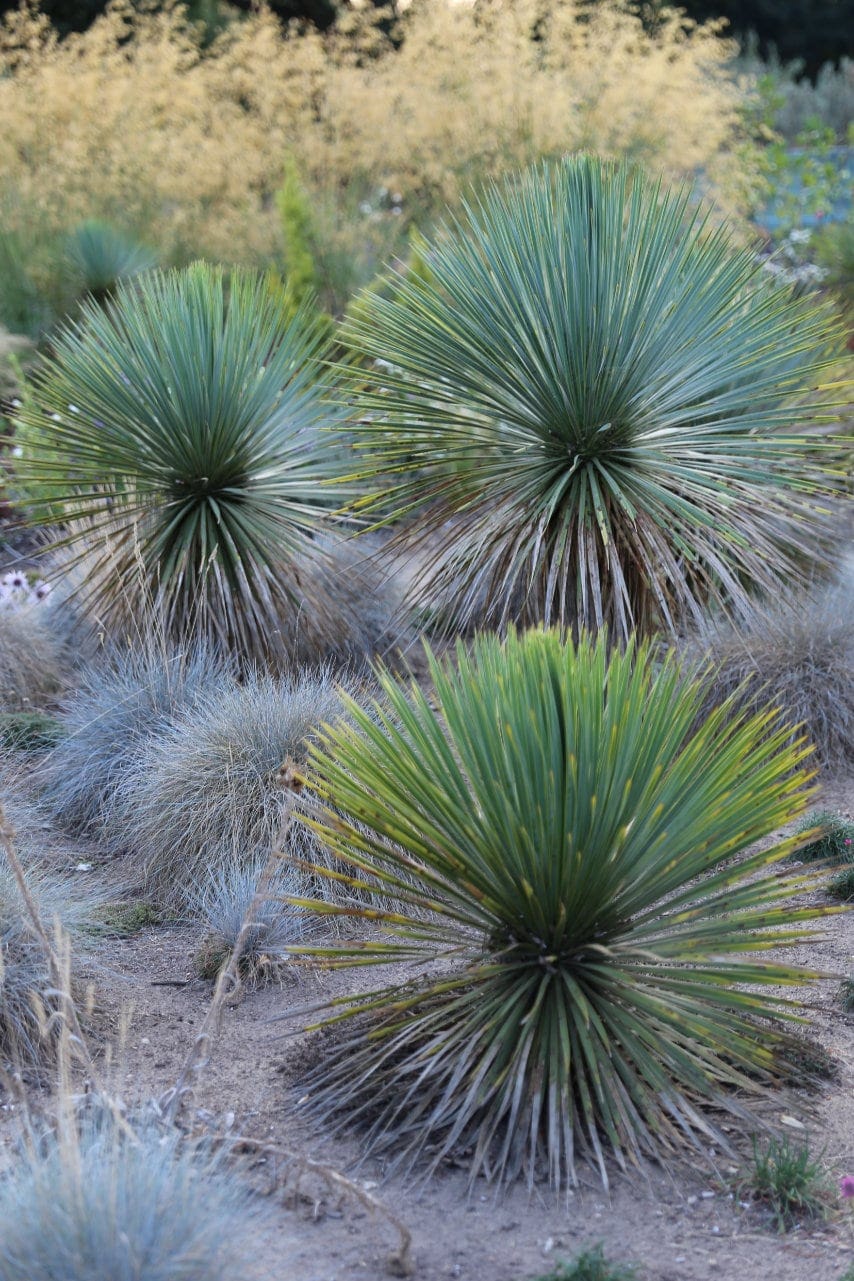
Yucca rostrata is a smaller yucca, with narrow leaves 60-90cm long. When I first saw these I totally fell in love with them, and it came as a happy surprise to find how hardy they are, provided they have good drainage. I have three in large terracotta pots at home. Even small young plants can be quite pricey, but I’ve found them quite affordable at the excellent Burncoose Nurseries. They stock the cultivar ‘Sapphire Skies’, said to have the bluest colour. Their intricately spiky spherical form reminds of a Koosh ball. Like Yucca treculeana, they form a trunk and can branch.
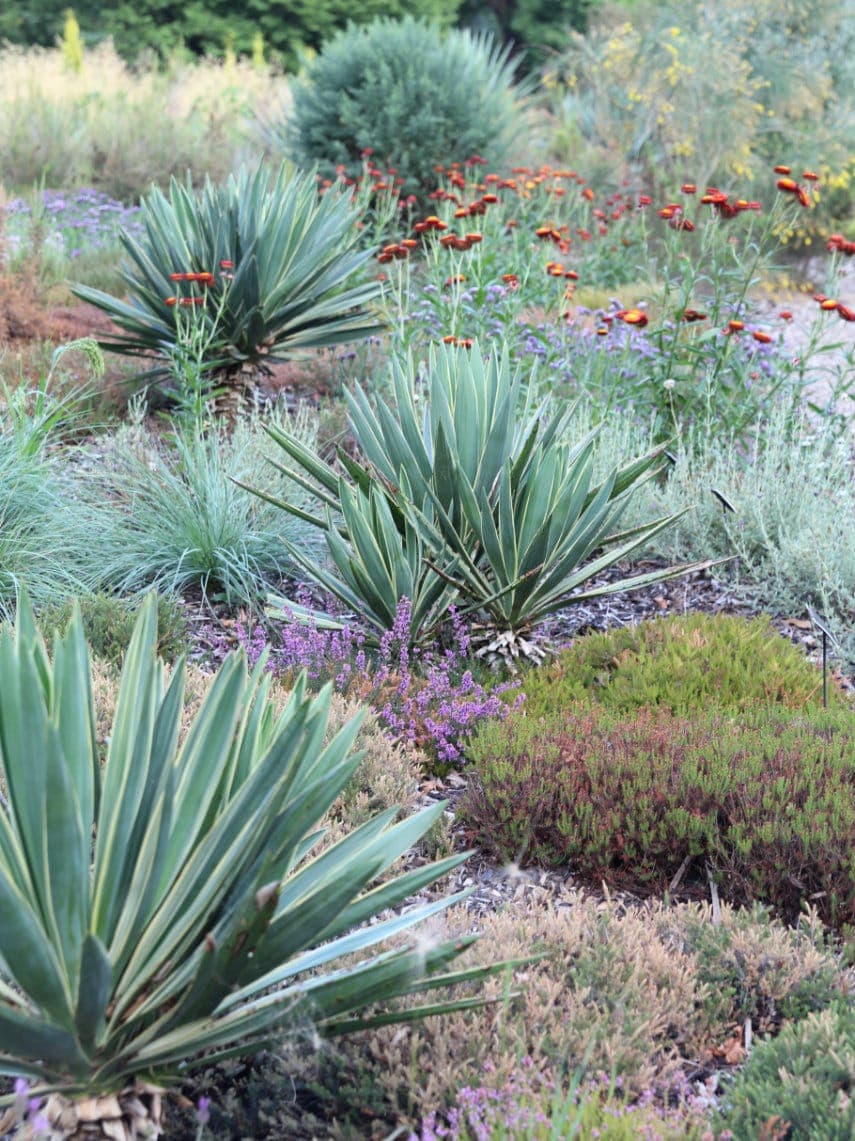
Yucca gloriosa ‘Variegata’ is one of the more common yuccas, often seen flowering with large creamy flowers. This yucca does form a trunk as it grows, and can reach up to 2m in height, but very slowly. Yucca flaccida is another similar common yucca, mostly seen as reputable cultivars ‘Golden Sword’ and ‘Ivory’. Yucca filamentosa is somewhat similar, but has white threads seen loose at the leaf margins, giving the plant its common name of needle-and-thread plant. Both Y. flaccida and Y. filamentosa have relatively soft and flexible leaves, and do not develop a trunk. They tend to be ‘multisuckering’, meaning they produce multiple growing points at the base. These can then be dug out with a spade if you want to propagate the plant, or maintain the plant as one large rosette for a clearer architectural effect.
Photography by Owen Hayman, late July 2022
Owen Hayman
Owen joined the Bestall & Co planting and aftercare team in spring 2019. He is an RHS qualified horticulturist, holding a full Level 3 Diploma in Horticulture, and recently came in the top 3 at the Northern Regional Final of The Young Horticulturist of the Year 2019. After first doing a foundation diploma in Fine Art, he went on to gain a degree and masters in Plant and Soil Science from the University of Sheffield in 2014. Owen worked as a researcher on various field research projects in Alaska, Panama and Borneo. When not away in the field, he became obsessed with visiting gardens and nurseries across the British Isles and the Netherlands, developing his own garden, and then taking on a walled allotment garden as a personal project. He realised his true passion was in horticulture, and so moved away from academia and into the world of specialist plant nurseries and professional gardening.
Owen is now studying the Wisley Diploma, but continues to write articles for us on a monthly basis, and we're delighted to maintain contact with such a passionate and knowledgable plantsman.


